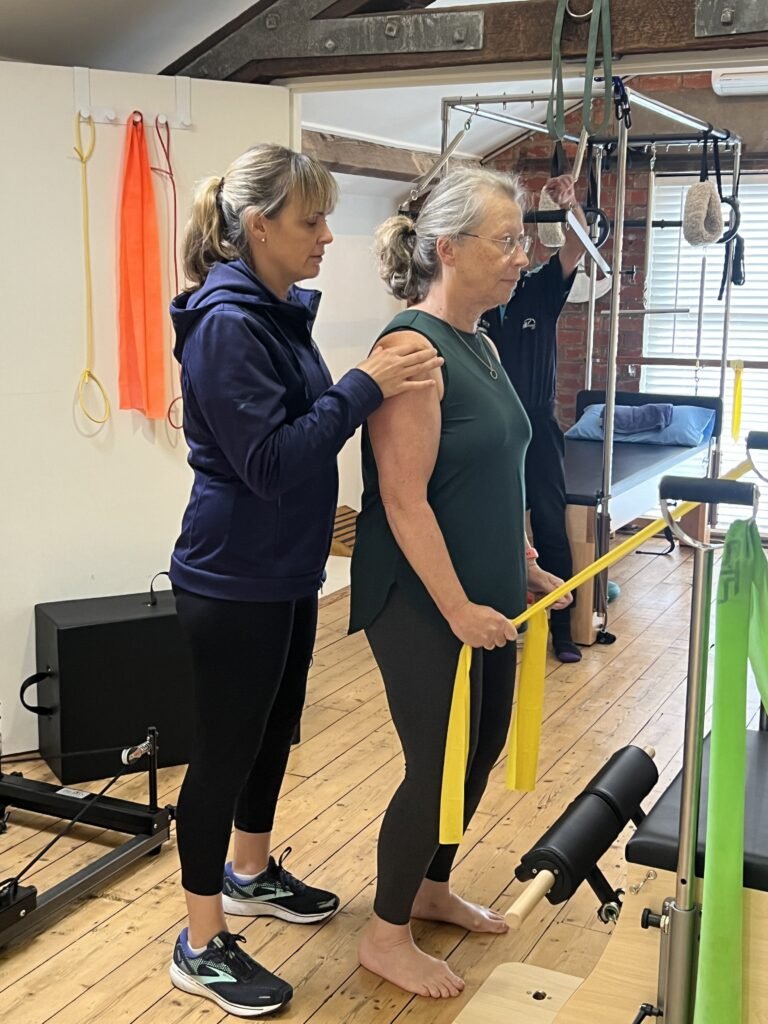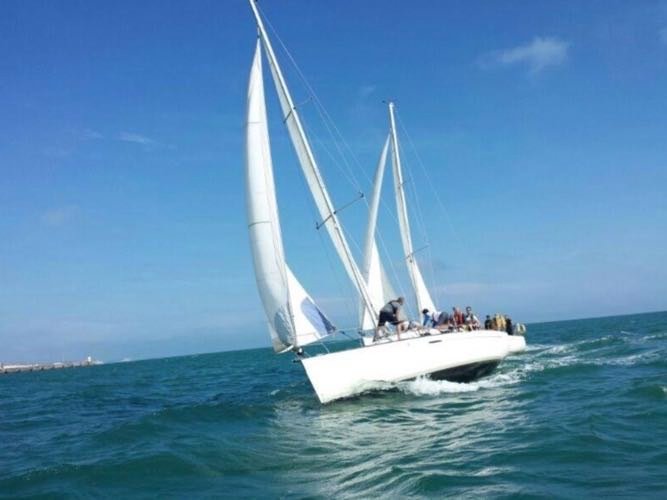Sailing is often seen as a graceful sport, but anyone who has spent time on a keelboat knows it is also physically demanding. Whether you are grinding winches, hauling sails, trimming mainsheet, or hoisting the main, the movements place significant stress on your shoulders and upper body. Without good technique and conditioning, sailors risk overuse injuries—particularly to the rotator cuff, the small but crucial muscles that stabilise the shoulder joint.
Why Shoulder Health Matters in Sailing
Many sailing tasks involve long-lever arm movements (reaching and pulling with your arms stretched far out in front), often against resistance. These positions naturally place the shoulder in an impingement zone, increasing the risk of pain, tendon irritation, or even rotator cuff injury. Add the repetitive nature of grinding, pulling, and lifting, and the demand on your shoulder stabilisers multiplies.
Unlike sports where movements are varied, sailing often requires repeating the same motion for long periods. This makes it critical to develop not only strength but also endurance and stability in the right muscle groups.
Core and Shoulder: A Connected System
The shoulder does not work in isolation. True shoulder stability depends on the strength and coordination of your core and back muscles. If your core collapses, your shoulders will compensate, often leading to overload in the anterior (front) muscles such as the pecs. This imbalance can set you up for injury.
Instead of “bracing” or bearing down through the abdominals, sailors should learn how to engage the deep core system effectively—maintaining support without rigidity. Think of it as building a stable platform from which the shoulders can work efficiently.
Scapular Stability: The Foundation
At the heart of shoulder protection is scapular (shoulder blade) stability. The rotator cuff functions best when the shoulder blade is set and supported by the muscles of the mid-back. This means engaging the lower trapezius, rhomboids, and serratus anterior to anchor the scapula before performing big pulls or overhead tasks.
For example:
Grinding a winch → set your shoulders down and back, use your trunk rotation, and avoid letting the shoulders roll forward.
Hoisting the mainsail → initiate with strong shoulder blade control, keeping the ribcage stable to avoid overloading the front shoulder structures.
Lifting sails or bags → bend through the hips, engage your core, and keep the load close to your body rather than reaching out in front.
Practical Tips for Sailors
Warm Up Before Sailing – A few minutes of mobility and activation can wake up your rotator cuff and back muscles.
Strengthen Your Back, Not Just Your Chest – Prioritise exercises such as rows, reverse flys, and Y/T/Ws to build scapular endurance.
Train Core Stability, Not Just Abs – Practice dead bugs, bird dogs, and plank variations that emphasise control rather than sheer force.
Practice Good Shoulder Positioning – “Set” your shoulders before pulling or grinding by gently drawing your shoulder blades down and back.
Avoid Long-Lever Loading When Possible – Bring loads closer to your body and share the effort with your trunk, not just your arms.
The Takeaway
Sailing places unique demands on the body, especially the shoulders. By focusing on scapular stability, linking shoulder strength with core control, and using good lifting and grinding technique, sailors can protect their rotator cuff, reduce injury risk, and perform more efficiently on the water.
Sailing is about skill, strategy, and endurance—don’t let preventable shoulder pain take you out of the race. Train smart, move well, and keep your body sailing strong.


